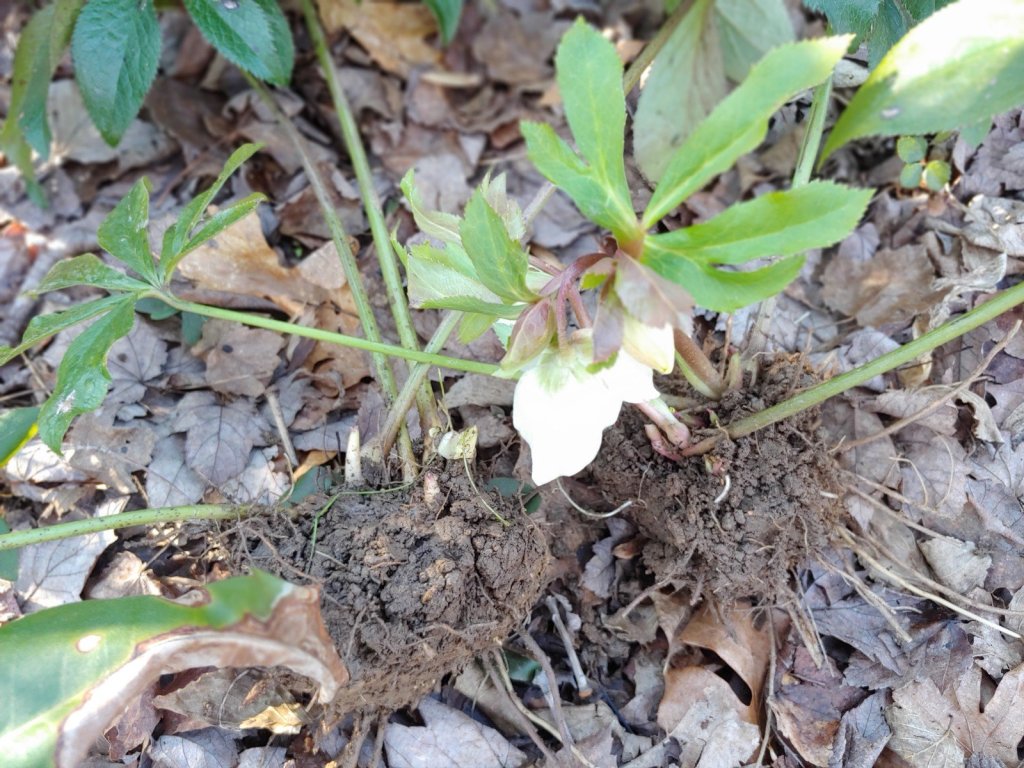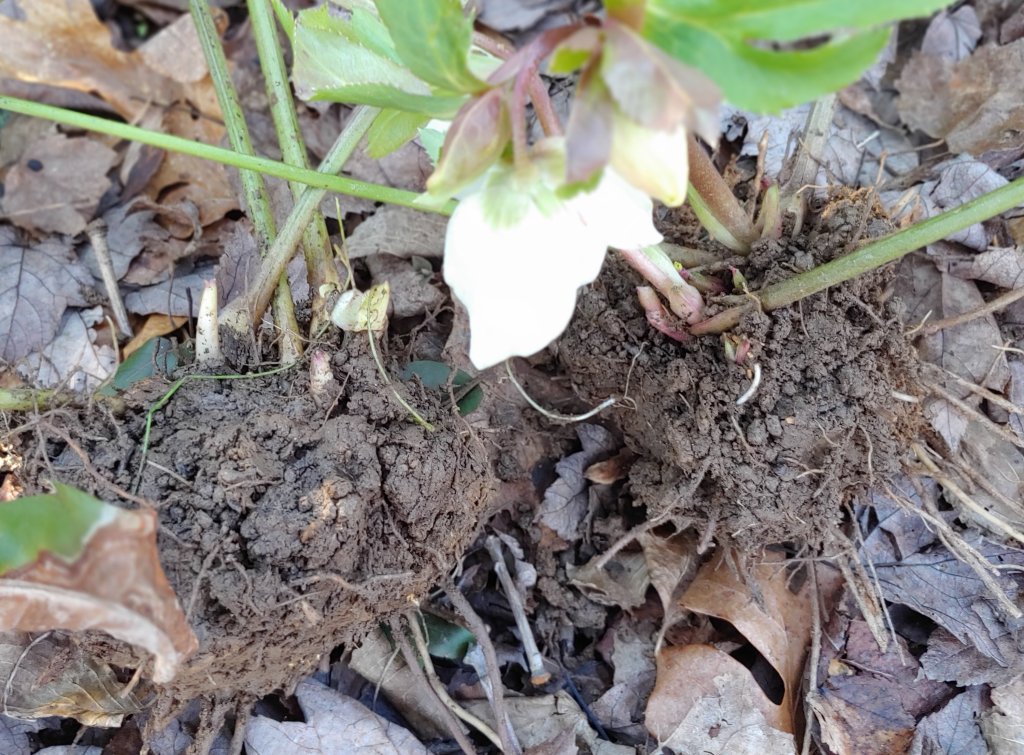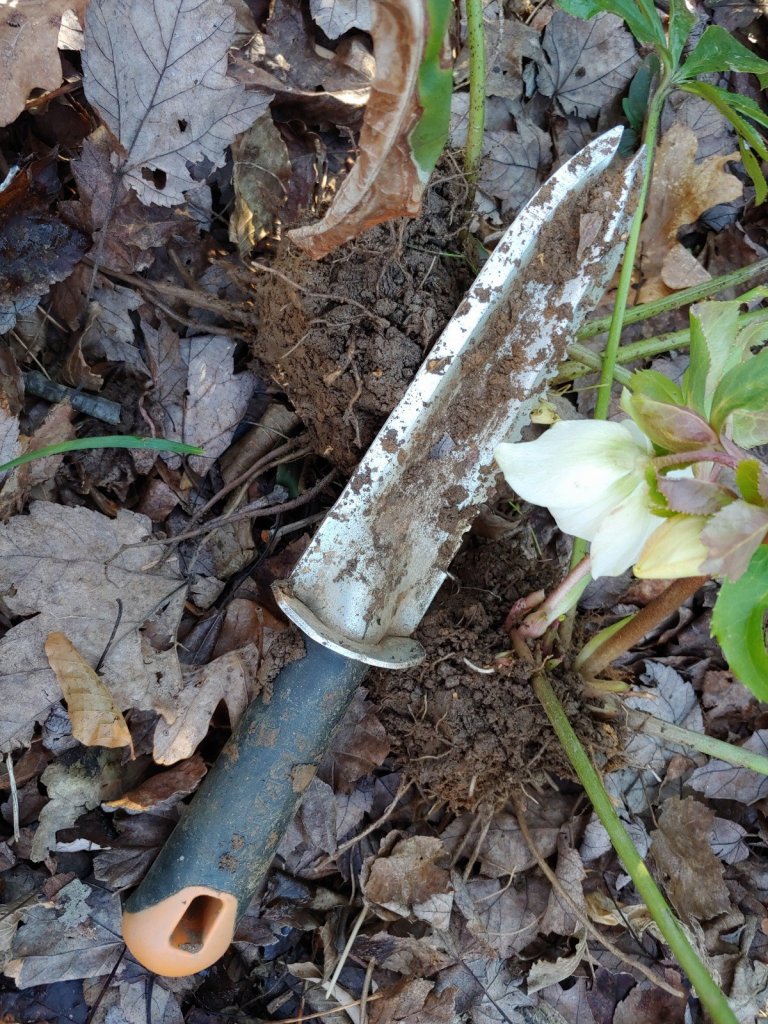Today is blustery and cold, barely above freezing by mid afternoon, but the sun is shining after several damp days so I must get out into the garden. There are no chores that must be done immediately, but areas of hellebores have become congested by seedlings, so this seems a reasonable task for the day that can be interrupted for frequent trips indoors to thaw chilly fingers.

With the first of February a few days off, the itch for spring is stronger by the day. While there have been no periods of extreme cold this winter, there have also been too few mild days, to my thinking. The forecast for early February looks no different, though I will not be surprised if highs of fifties and warmer become more regular late in the month.

With dozens of mature hellebores in the garden there are hundreds of seedlings, and today ones that have grown to flowering size will be relocated so that parents and progeny have more space. The most congested area of hellebores has no parent plants at all, but seeds drain from long established clumps into this area beneath several spring flowering camellias at the garden’s border. While shallow roots from maples in the forest, and from a nearby Chinese dogwood invade the area, there are pockets of deep soil where hellebores grow vigorously. But also in close proximity, so ones that have grown to flowering size will be moved, to plant beneath tall hydrangeas and sweetshrubs.

The digging of three and four year old hellebores is quite simple, accomplished with the garden knife (above) since the roots are rather compact. While the top layer of exposed soil is frozen, this area is leaf covered and will remain thawed except in the coldest winter temperatures. The hellebores’ roots often must be pried away from the dogwood’s, but this is not difficult, and a dozen or more will be moved this afternoon.
On occasion, I read with envy about a gardener’s acre plot of hellebores, and though mine will never match this, there are more areas to be planted. I hope that more can be done in milder weather, but I’m happy to be occupied in the garden today after too many days trapped indoors.
I grow hellebores and to keep seedlings from overtaking my garden, I deadhead them before the flowers go to seed. It’s a lot of work but is worth the time it takes so that I don’t have to remove all the seedlings.
Yes, deadheading is a lot of work and in this garden there are still spaces to plant that I welcome seedlings. I think that it might be easier to grub out tiny seedlings than to deadhead.
Thanks for this reminder — I too have areas that are overgrown with self-seeded hellebores. I love hellebores and welcome them as a groundcover, but it’s time for some “decongestion.”
There are more that I could have (should have) moved, but perhaps another day.
Hellebores were a minor crop that we could not grow fast enough. Cultivars grew slowly. However, their abundant seedlings got canned and sold as random seed grown hellebores. They were more prolific in that regard than they should have been, but they were never very healthy. I really did not like growing them, because I knew that they would look no better in the landscapes that they went into. It was a fad that I did not like. I work with a few hellebores here, but would prefer prettier perennials. The flowers are quite nice, but the foliage is not. They might be happier if we had the resources to remove old foliage that shares foliar disease with new foliage.
Hellebores are a necessity for us to have winter flowers. Cultivars vary in vigor with most being far less vigorous than seedlings.
None of ours are particularly vigorous, so I noticed instead that the cultivars had bolder flowers. Now that I no longer grow them on the Farm, I work with a few in the landscapes. The smaller seedling flowers stand up better than the bulkier flowers of the cultivars. Since there is always something to bloom here, hellebore flowers are not so important. They just happen to bloom in the shade; and there is a lot of shade in redwood forests. Why is bloom so important in climates where there is not much to bloom through winter? Is it so bad for the garden to lack bloom for part of the year?
Once most gardens in this area go into dormancy in November there is nothing of interest until mid to late March. There are plenty of evergreens and berries on hollies and others, but most people do not go out into their gardens for months.
So, . . . no one is out there to enjoy the bloom anyway?
In this climate there can be something blooming at any time if we want it. It just is not a priority. There is a bit of color in some of the landscapes, but the most prominent features are the redwoods, which do not bloom in color.